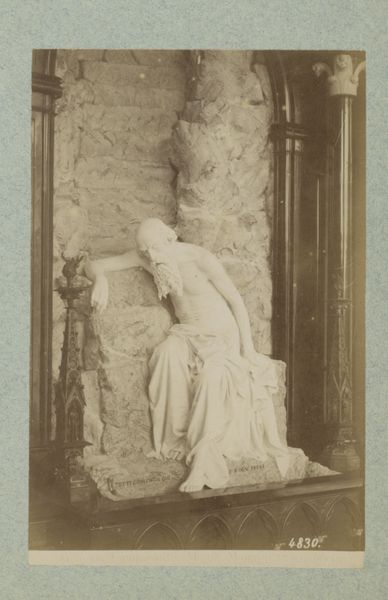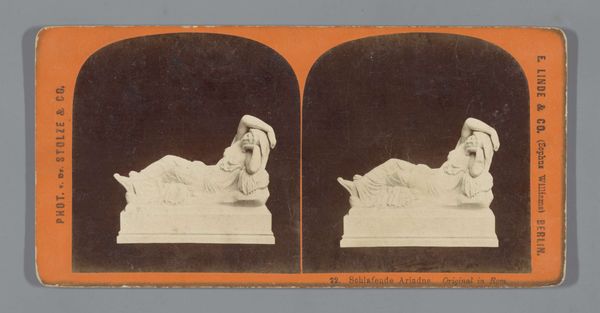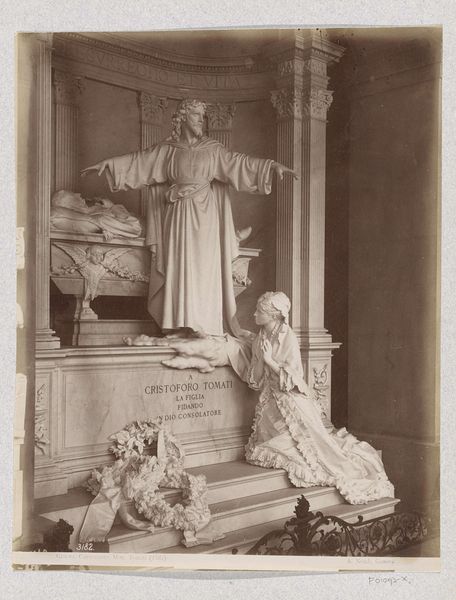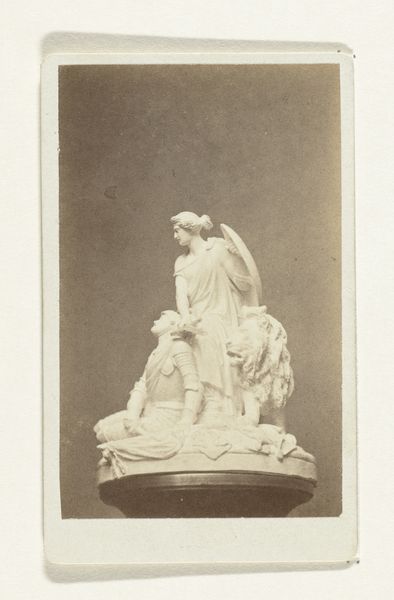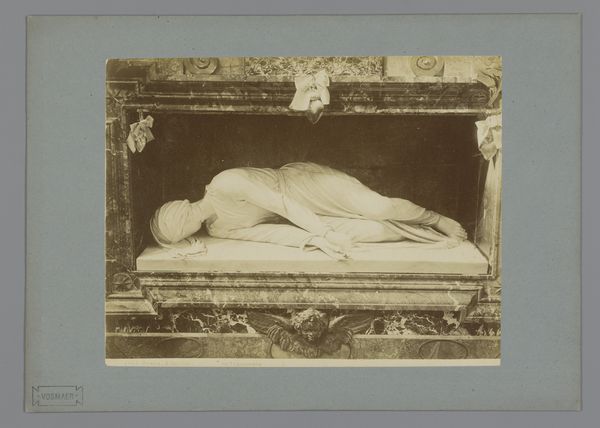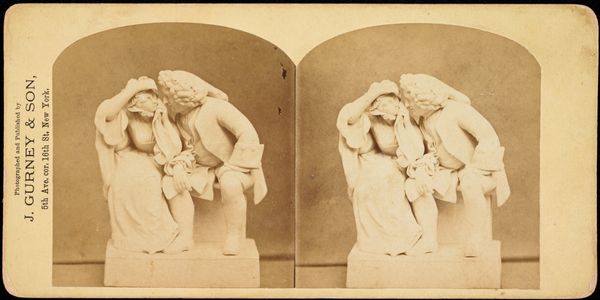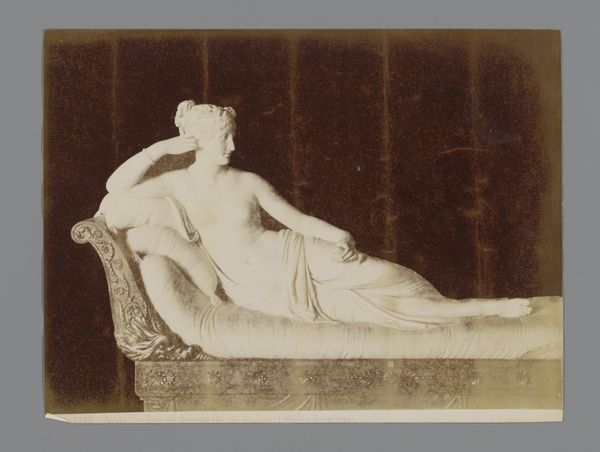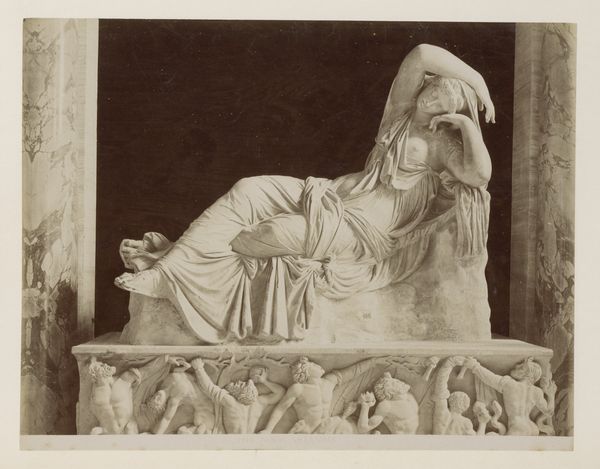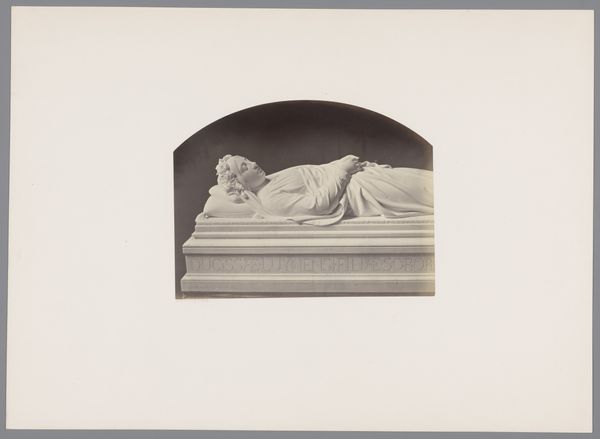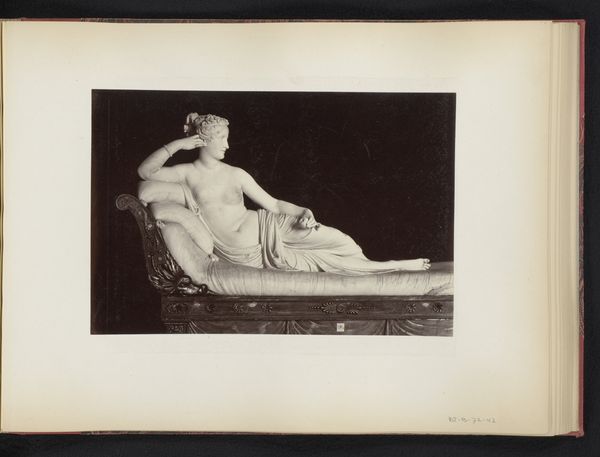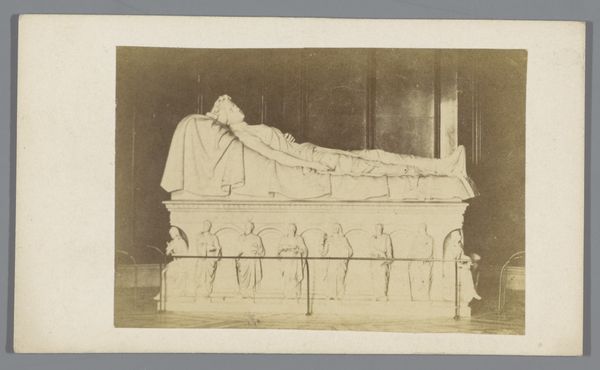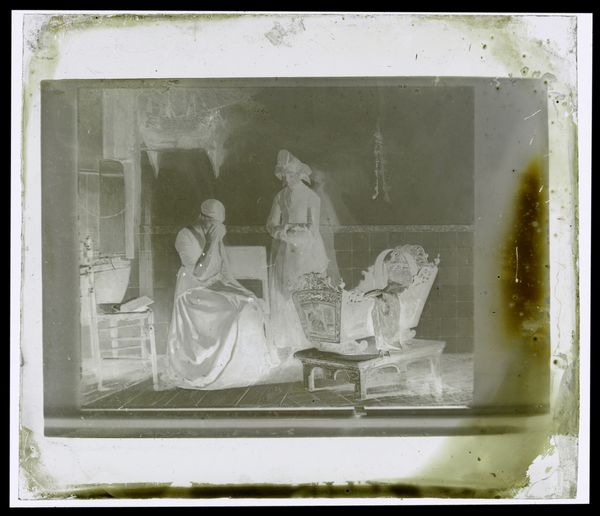
Monument voor Raffaela Pienovi op de begraafplaats van Staglieno in Genua c. 1870 - 1890
0:00
0:00
photography, sculpture, marble
#
portrait
#
statue
#
sculpture
#
photography
#
sculpture
#
marble
#
statue
Dimensions: height 210 mm, width 286 mm
Copyright: Rijks Museum: Open Domain
Curator: This is a photograph of a marble sculpture, taken by Alfredo Noack, circa 1870 to 1890. The sculpture itself is a monument to Raffaela Pienovi, located in the Staglieno Cemetery in Genoa. Editor: Woah. Immediately, I'm struck by its eerie beauty. The draping fabric and the woman's delicate hand – it feels so tender, but also otherworldly. Curator: Absolutely. Note the way the sculptor uses the marble to create the illusion of soft, flowing fabric. It highlights the mastery of the material. Consider, too, the societal context. Wealthy families commissioned these elaborate monuments to display status and remember their loved ones, driving demand for sculptors and workshops that often employed highly specialized labor. Editor: It's like a frozen moment of grief, so theatrical, almost staged, isn’t it? Makes you wonder about the relationship between the figures. Is it a mother and child? Or perhaps a wife and her departed husband? The whole composition invites endless speculation and interpretation, but I still wish there was less...marble? Curator: Well, marble was very en vogue and a status of luxury. The choice of materials – particularly imported marble – signals wealth. Furthermore, this photograph itself, taken by Noack, captures a booming market for memorial art sold to the wealthy. His lens reveals the fusion of art, commerce, and remembrance shaping the cemetery space. Editor: It's definitely thought-provoking how a photograph of a sculpture can be just as affecting as the original. The interplay between light and shadow emphasizes the carving; really brings out the stark reality of death in this incredibly artful manner. Curator: Yes. We can look at Noack's contribution, then, not just as the chronicler of someone else's art, but as a producer of cultural meaning through the very act of photographic reproduction and circulation. Editor: That said, as I let myself fall deeper into the sculpture, I find myself moved despite its rigid formality. It really begs the question, what is love, what is grief in cold, hard stone? Curator: Precisely. So this photographic record serves as valuable documentation and tells a larger narrative. It weaves together threads of labor, economy, artistic skill, and even photographic enterprise of its time. Editor: It leaves you contemplating mortality, artistry, and, well, the stories behind the stones, doesn't it? Curator: Indeed, and thinking about artmaking's social role.
Comments
No comments
Be the first to comment and join the conversation on the ultimate creative platform.
